List of Home Inspection Tools and Inspector Safety Equipment
Home inspectors are actually required to use only a few types of equipment. In theory, an inspector could perform an inspection that complies with the InterNACHI Standards of Practice using only two pieces of equipment: a flashlight and an electrical tester capable of testing ground-fault circuit interrupter (GFCI) devices.
However, there is equipment an inspector needs in order to perform inspections safely.
Inspectors should have a respirator for the times when they must enter areas containing materials that may introduce particulates into the air that are potentially hazardous if inhaled. Dust masks are inadequate. Respirators must be equipped to filter out both particulates that represent biological hazards, such as viral, bacterial and fungal organisms, and hazards caused by material lodging in the respiratory system, as with asbestos and other carcinogens. Other particulates that are small enough to become airborne may not be carcinogens but may cause other types of respiratory illness. Gloves and safety glasses used when working around exposed electrical components are other common safety items.
Inspectors use many other types of equipment because their use allows the inspector to offer an inspection of enhanced value. Moisture meters and infrared cameras are good examples. Both of these pieces of equipment allow inspectors to identify unacceptable conditions that cannot be identified visually. Although not required by the Standards of Practice, inspectors sometimes feel that offering inspections using these tools will allow them to provide a more valuable inspection, giving them an advantage in the competitive inspection business.
Some types of equipment are used because they make the inspection process easier or faster for the inspector. Telescoping ladders are a good example. They can be collapsed and carried through a home with less risk of bumping into walls and furniture. Infrared thermometers allow inspectors to check the temperature of heating and cooling system registers located in inaccessible places, such as under beds and other large, heavy furniture.
Inspectors are free to use whatever equipment they choose, as long as their inspections comply with the InterNACHI Standards of Practice. Here are examples of some of the equipment used by home inspectors.

This photo shows an example of the equipment typically used by an inspector. Equipment is taken to the inspection in two cases. Inspectors may use a bag, a bucket or a general-purpose toolbox.
Electrical Testers
Inspectors use a variety of electrical testers according to their preference and how much they are willing or can afford to pay. Generally, the more expensive testers identify a wider range of defects than less expensive testers.

Electrical tester: This type of tester is widely used but indicates only the more common defects. The button is for testing GFCI devices and the three colored lights indicate various defects. It does not test for defective AFCI devices that are often required in certain rooms in new homes. It tests 120-volt electrical receptacles but not 240-volt receptacles. Almost every inspector has one and many inspectors use only this tester when checking electrical components. The photo also shows one mounted on a retractable key chain for easy use and costs between $10 and $15.

AFCI/GFCI tester: This type of electrical tester checks for proper operation of both arc-fault and ground-fault circuit interrupter devices. It is used by some inspectors. This is the SureTest Ideal 61-059 tester and costs about $170.
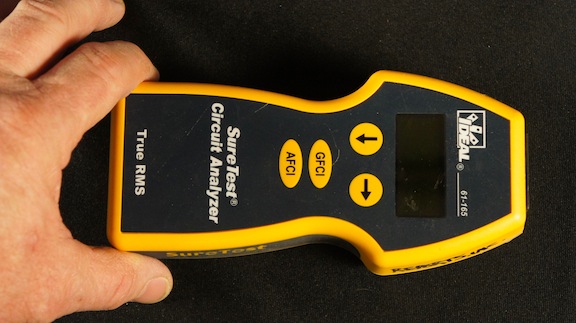
AFCI/GFCI tester for arc-fault and ground-fault circuit interrupters: This circuit tester tests arc fault- and ground fault-protected electrical circuits to confirm that protection devices are working properly. It is used by some inspectors. This SureTest Ideal 61-164 tester costs about $260.

Voltage indicator: This very simple device is used to determine whether voltage is present in a device or in wiring. It has limited accuracy and may give positive readings where no house current is present but levels of generally harmless static electricity are present. The cost is about $10.
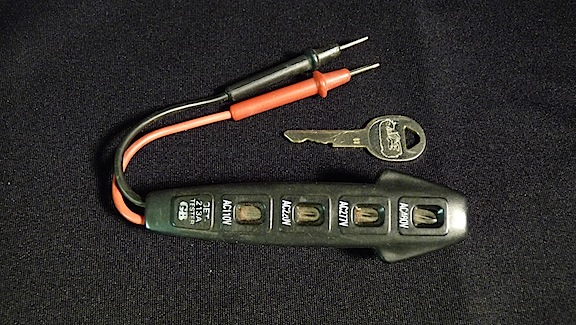
Electrical tester: This tester tests for the presence of both 120-volt and 240-volt electrical current. It is useful for testing electrical receptacles for dryers when no dryer is installed in the home at the time of the inspection.
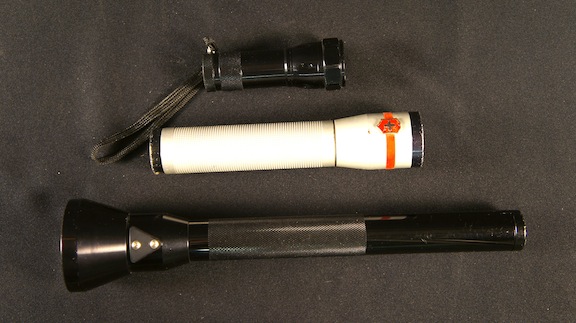
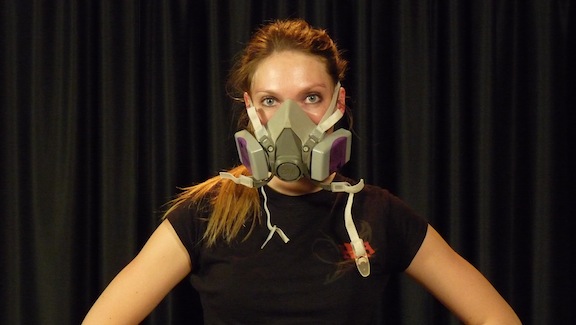
A half-face respirator
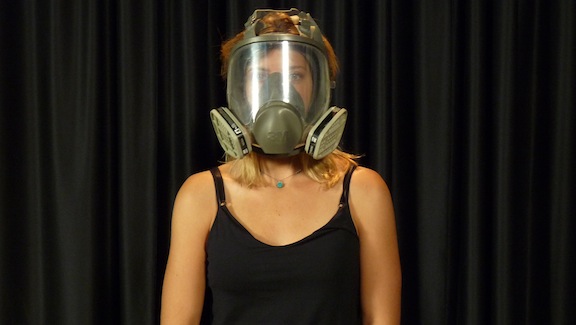
A full-face respirator
Half-face and full-face respirators are good for respiratory protection but not very comfortable, especially in the heat. Many inspectors may own them but may not actually use them on a regular basis. They are important to have available because some areas are dangerous to enter without respiratory protection. Some types of organisms can even enter the human body through the mucus membranes around the eyes.

A combustible-gas detector detects small amounts of combustible gases. Most inspectors use their noses since the most common combustible gases – natural gas and propane – have odors that are easy to detect. This Bacharach brand costs $350.

Moisture meter in “search” mode
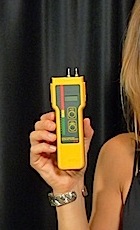
Moisture meter in “measure” mode
Moisture meters come in two types: search and measure. Using the meter in search mode, inspectors can find elevated moisture levels hidden behind a variety of materials, such as tile and vinyl. This feature helps locate plumbing leaks hidden beneath shower and bathroom floors. Using the meter in search mode allows inspectors to find areas with elevated moisture levels but does not provide a measurement of those levels. Using the meter in measure mode allows inspectors to actually measure levels in materials by touching the material with the two pins. Some moisture meters have both search and measure features. Most meters have either one or the other. Used by most inspectors, they cost between $350 and $550.

Carbon monoxide analyzer: Carbon monoxide (CO) is a tasteless, odorless, toxic gas produced by combustion appliances, such as water heaters, furnaces and boilers. CO can accumulate in the human body over time to a point at which it can be fatal. Excessive levels can be produced when combustion appliances operate inefficiently and need servicing or when they are improperly vented. Analyzers measure CO levels and give results in parts per million (PPM). Used by some inspectors, they cost between $250 and $500.

The digital readout on an infrared thermometer tells the temperature of whatever you point it at using an infrared beam. It’s used for checking the temperature of heating and cooling equipment, including registers, hot water, etc., and the temperature of electrical equipment, such as circuit breakers. Infrared thermometers are also convenient for checking the temperature of items that are difficult to reach. Most home inspectors use these and they cost up to $100.

Continuous radon monitors test for the radon. Radon testing is an ancillary inspection for which clients pay an additional fee. Radon levels in homes vary by area. Some areas have little or no radon, and some can have high levels. Continuous radon monitors sample the air once an hour. At the end of the 48-hour minimum test period, the monitor gives a result that is the average of all samples. This model costs about $550.

An infrared camera

An image taken by an infrared camera
Infrared (IR) cameras form images using infrared radiation in a manner similar to the way a conventional camera forms images using visible light. Different colors correspond to different temperatures, so an inspector is able to identify areas that are abnormally hot or cold. The image above shows cold areas at the top of the walls caused by settling of the insulation. The ability to offer it as an ancillary inspection varies among inspectors.

Microwave testers confirm that the magnetron that powers microwave ovens is working. It does not read microwave levels. Some inspectors use them. They cost less than $10.
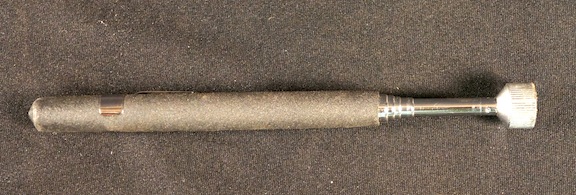
Telescoping magnets make it easier to retrieve dropped items, such as screws from the main electrical panel cover. They are used by some inspectors and cost about $10.

Telescoping adjustable mirrors are easy to carry and useful for looking into areas where accessibility is limited, such as behind siding and stucco to confirm the presence of housewrap.

The wick of a smoke pen produces smoke that shows the movement of air. A smoke pen can be used to check combustion appliances for back-drafting that can pull toxic exhaust gases out of an exhaust flue and into the living space. It might also be used to show that return-air vents are operating properly. They are used by some inspectors and cost about $15.
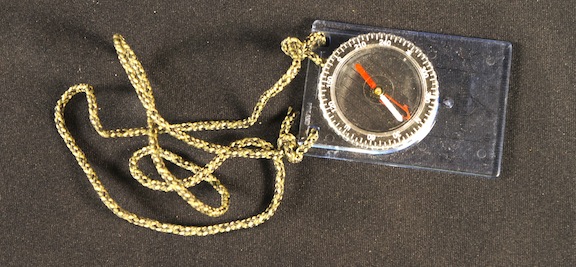
A compass is used to determine the home’s directional orientation, which can be helpful if the home has energy-efficient features or if the client requests that the home’s elevation be described by the direction it faces. Some inspectors carry them and they cost less than $10.



High-traction roof boots with replaceable soles make it easier for inspectors to walk roofs without slipping. They run about $80. When the soles become worn, they can be changed out.

Toolkits: Although inspectors are not required by InterNACHI’s Standards of Practice to disassemble anything, sometimes the removal of a few screws can allow easier inspection of various items, such as furnaces. They cost about $10 each.
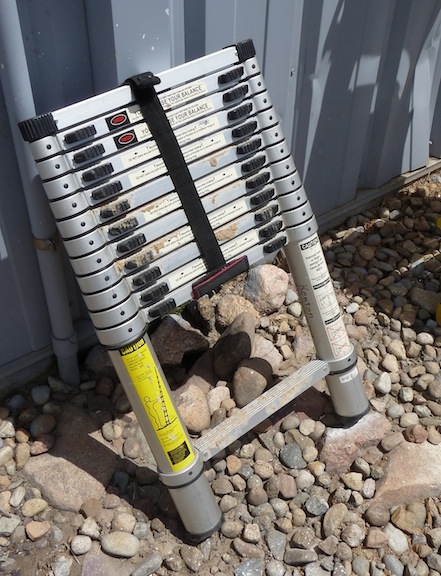
Collapsed telescoping ladder
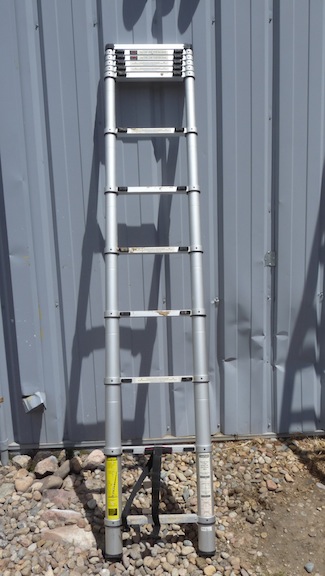
Extended telescoping ladder
Telescoping ladders are easy to carry through homes without bumping into walls and can be carried in the trunk of a car. They can be more dangerous than other types of ladders because it cannot be visually confirmed that the locking mechanisms are fully engaged. They are used by some inspectors and cost about $170.
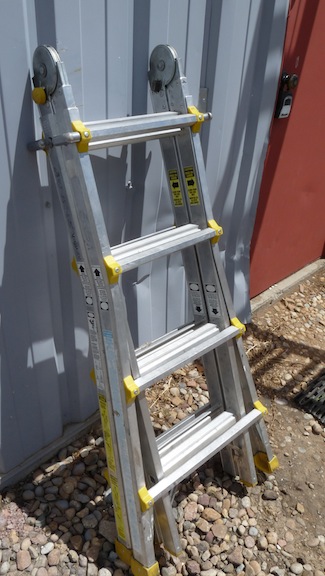
Collapsed articulating ladder
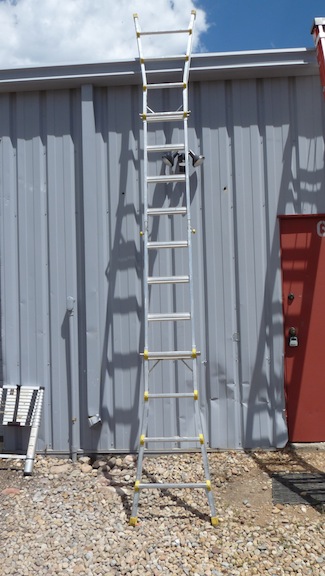
Extended articulating ladder

Articulating ladder in step-ladder configuration
Articulating ladders can be used as both step ladders and extension ladders and will fit in the trunk of many cars. They are used by many inspectors and cost about $300.
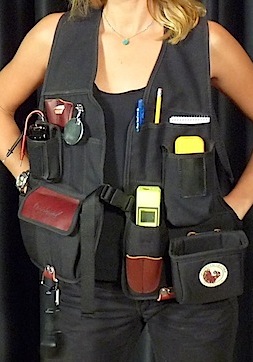
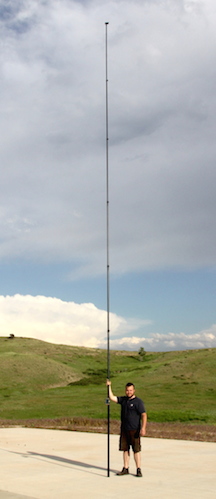
Inspectors should always bring with them gear that can help prevent hazardous situations inherent in inspections, as well as wear appropriate personal protective equipment (PPE) that will prevent injury and/or illness on the job.

Ironically, the process of inspecting for safety defects can itself compromise the safety of inspectors and their clients. InterNACHI Inspectors can use the following types of equipment to help ensure that inspections proceed problem-free.
- Coveralls: Coveralls are made from a variety of materials, often canvas or Tyvek®, a tear-resistant, flexible plastic widely used to make items such as postal mailers, banknotes and even DVDs. While canvas is puncture-resistant, Tyvek® is disposable and lightweight, as well as anti-static, breathable and chemical-resistant. However, it should not be used near heat or open flames. Both canvas and Tyvek® provide effective barriers against splashes, asbestos, chemicals, lead dust, and other harmful substances.
- Flashlights: Inspectors should bring at least two flashlights with them before entering dimly lit attics and crawlspaces. This precaution will eliminate the possibility that one flashlight will lose power, forcing the inspector to feel his way back out. The multitude of dangerous elements that potentially lie in attics and crawlspaces is startling -- from exposed nails and broken glass, to dangerous reptiles, insects and mammals. No one should ever enter these areas without a flashlight.
- Goggles: Goggles can protect against many types of harmful airborne substances, such as mold spores and sawdust. Inspectors should be sure to wear goggles or some other type of eye protection while inspecting electrical panels, which can emit dangerous sparks or arcs.
- Roof equipment:Inspectors who must walk on rooftops (especially those who perform roof, wind and hail inspections) regularly risk fall-related injuries. Some equipment that can keep them from stumbling off a roof are:
- roof shoes: Shoes form the only constant point of contact between the inspector and the roof, and the bond between them needs to be firm. Some companies make shoes that are specially designed for roof work, but these are not always necessary. Whatever type of shoes inspectors decide to wear, they should be flat and have high-traction rubber soles. Footwear with heels can become caught on roof surfaces, potentially causing the inspector to trip and fall;

- ladder tie-offs: Inspectors should bring with them straps to use to attach their ladders to the roof or structure. This attachment will help prevent the ladder from being blown away by a strong wind, embarrassing the marooned inspector. Also, a ladder tie-off can potentially prevent the ladder from slipping away from the building beneath the weight of the climber.
- personal tie-off:Inspectors may want to attach themselves to the roof as an added security measure. A few notes about this procedure:
- Some roofs do not allow for the implementation of this safety measure. Roofs must have a protruding, sturdy, accessible place as a connection point, such as a chimney.
- The strap must have as little slack as possible. Rolling down 15 feet of steep roof and then plunging another 10 feet before being halted in mid-air is still going to hurt. Plus, the dangling inspector will need to somehow climb back up.
- It is best to attach the strap to a harness designed for that purpose, rather than a tool belt or limb.
- It is dangerous to tie the strap to a car on the other side of the house. While the car might hold the inspector in place during a fall, it would not hold the inspector in place if someone were to drive the car away. A riding lawnmower is also a poor choice for an anchor.
- roof shoes: Shoes form the only constant point of contact between the inspector and the roof, and the bond between them needs to be firm. Some companies make shoes that are specially designed for roof work, but these are not always necessary. Whatever type of shoes inspectors decide to wear, they should be flat and have high-traction rubber soles. Footwear with heels can become caught on roof surfaces, potentially causing the inspector to trip and fall;
- Gloves: Rubber or leather gloves are important for inspecting electrical panels to reduce the chance of accidental shock. Also, they should be worn in crawlspaces and basements. A certain amount of crawling on all fours through these areas will be necessary during inspections, and gloves will certainly make this activity safer. Gloves should not be loose.
- Respirators: Respirators are necessary safety equipment for inspectors. Choices include a full-face respirator, which covers the eyes, nose and mouth, and a half-face respirator. Full-face respirators may provide greater protection against certain toxins because they protect the mucous membranes around the eyes, but they are generally less comfortable. Wearers may find that the mask’s air filtration makes it hard to breathe, especially when the inspector must crawl and bend using physical movements that may restrict breathing. Respirators that have HEPA filters are excellent personal protective equipment since, by definition, they trap at least 99.97% of small particles.
- Road cones: Inspectors may want to consider placing road cones some distance behind their vehicles to prevent others from parking too close behind. Large, unwieldy items such as ladders are more safely removed when there is ample room in which to maneuver. Nothing causes tension like a Realtor who gets knocked in the head after parking snugly behind the inspector’s truck. Also, as universal symbols of caution, road cones will alert passing motorists and pedestrians of the need to maintain a safe distance.

- "Danger" signs: A sign can be placed near dangerous areas in which the inspector is working to warn clients and others of potential hazards. In 2008, an inspector in Seattle was sued because his client fell through an opening in a floor leading to a crawlspace that he was inspecting, and the client broke his arm in three places. The lawsuit alleges that the inspector was guilty of “negligence and misconduct” because he failed to notify the client of the potential hazard.
To avoid such liability and to ensure the safety of all persons present at an inspection, InterNACHI has created compact, lightweight "STOP -- Inspector at Work" signs for inspectors to use at job sites. These signs are specifically designed to be placed on ladders and near crawlspace entrances that are being inspected. Made of strong, durable plastic, they fold up flat and fit securely over the rung of the inspector's ladder. Using them may also provide legal leverage for inspectors who are held responsible for harm inflicted to their clients during an inspection.

